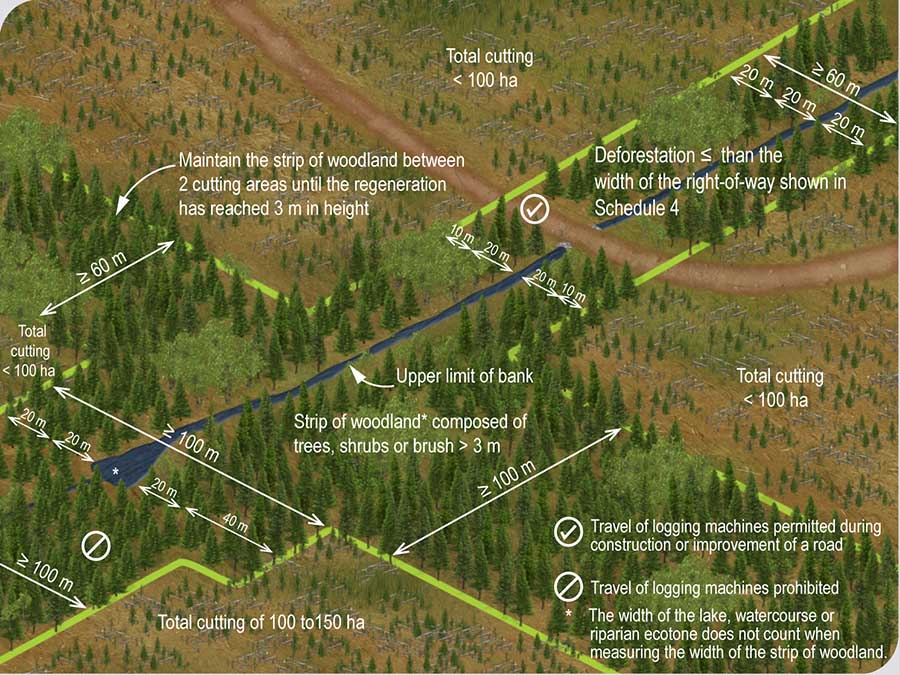Chapter VI – Allocation of forest operations and residual forest
Division II – Special provisions applicable to the bioclimatic domains of the sugar bush and the balsam fir forest
§2. Total cutting other than block cutting
Section 137
Any total cutting is prohibited in the strip of woodland referred to in section 136 until the regeneration is established in the cutting areas in accordance with the first paragraph of that section.![]()
1
Objectives
- To maintain the components of the forest cover that provide shelter for wildlife
- To allow wildlife to move around by maintaining connectivity between its habitat and the neighbouring residual forest
Explanations
Any total cutting is prohibited in the strip of woodland between total cutting areas until the regeneration in the cutting areas has reached an average height of 3 m.
Figure 136 Strip of woodland between two total cutting areas other than block cutting
Partial cutting is allowed on 25% of the total length of the strips of woodland referred to in section 136 included in a management unit or in another forest territory in the domain of the State. However, the strip of woodland that is partially cut between 2 total cutting areas must be at least 75 m wide where each cutting area covers an area less than 100 ha or a minimum width of 125 m where one of the cutting areas covers an area of 100 to 150 ha. After partial cutting, the strip of woodland, that must be used as a visual screen and a corridor for the movement of wildlife, must be composed, per hectare, of not less than 1,500 standing live trees of commercial species having a diameter of 2 cm or more, as measured at 1.3 m above the highest ground level.
For carrying out the partial cutting referred to in the second paragraph, the deforestation of felling or hauling trails must be carried out over a width less than 1.5 times the width of the logging machine used.![]()
2
Objectives
- To allow certain forest development activities in or near a particular place
- To allow wildlife to move around by maintaining connectivity between its habitat and the neighbouring residual forest
- To allow for the harvesting of timber
The construction or improvement of a road crossing the strip of woodland is allowed to the extent that the deforestation carried out for that purpose does not exceed the width of the right-of-way provided for in Schedule 4 for the class of road to which it belongs.![]()
3
Objective
- To allow certain forest development activities in or near a particular place
Additional information
For road classes 1 to 5 and for unclassified roads, the maximum right-of-way width is established according to the width of the roadway and road shoulders. To determine the maximum right-of-way width, i.e., the maximum width that may be cleared, refer to Schedule 4. The schedule sets out right-of-way widths for winter roads, motorized all-terrain vehicle trails and trails for other uses. Other than right-of-way, roadway and shoulder width, all other characteristics given in Schedule 4 are for information only and are not provisions to observe in the application of this section.

